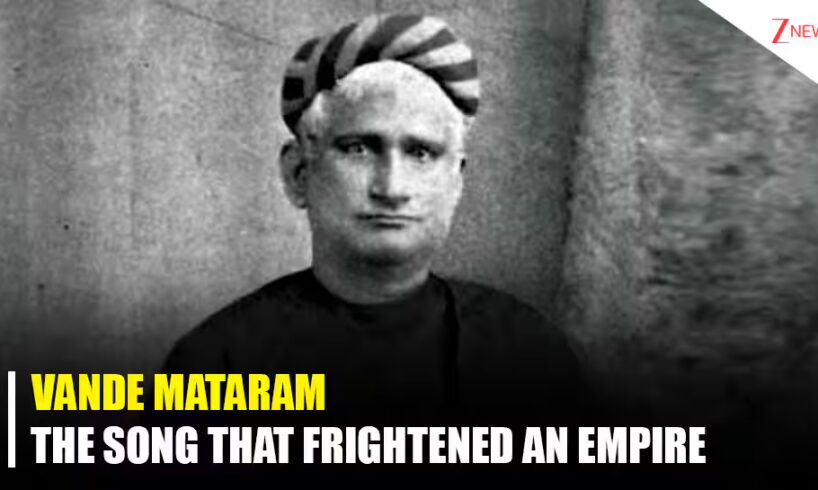
Vande Mataram: The national song ‘Vande Mataram’ that inspired the struggle for India’s independence has roots in a period of historical suffering and defiance vividly narrated by Bankim Chandra Chatterjee in his landmark 1882 novel ‘Anand Math.’ The story was a fictionalised account of the Sannyasi Rebellion born out of famine and colonial exploitation in Bengal in the 18th century.
The Agony Of 1773: Famine And Exploitation
The novel is set in the eastern part of India around 1773, a land rich in fertility and confronting catastrophic tragedy.
Add Zee News as a Preferred Source
The Bengal Famine: The region was reeling under a devastating famine and epidemic that had reportedly claimed the lives of over a million people.
Burden of tax: It was compounded by the financial cruelty of the British East India Company, which showed no effect of the natural calamity and continued to impose heavy land taxes, reportedly increasing the lagan or the land revenue by one and a half times as dyodhe lagan.
The Uprising: A generation after the Battle of Plassey, the ground, common to both the peasants and the Hindu ascetics or sannyasis, reached a breaking point. Discarding their musical instruments, the ascetics picked up spears and lances to begin an uprising against their British oppressors.
Bankim Chandra Chatterjee And The Emergence Of Nationalism
Nearly a century after the actual Sannyasi uprising, Bankim Chandra Chatterjee immortalised the movement in ‘Anand Math,’ creating one of the first novels to capture the spirit of a unified national movement.
The novel presented a conceptual articulation with the three key words Ma, Mati, and Manush, which pioneered a uniform society with one single national identity.
Motherland as Goddess: The Shakta tradition of Bengal thus provided an easy basis for personification. Chatterjee took his cue from a hymn contained in the Atharvaveda: “Mata bhumih putro’ham prithivyah parjanyah pita sa u nah pipartu” (This Earth is our Mother, and we are its children; the clouds are our Father, and together they nurture us).
Durga Personified: It is this spiritual sentiment that transformed the physical land from simple soil to the embodiment of Goddess Durga, the protector.
‘Vande Mataram’: The Anthem Of Resistance
This deep and unifying emotion that worshipping the land as Mother evoked in the public mind burst forth in the singing of ‘Vande Mataram.’
The First Recital: In the novel’s first section, the ascetic Bhabananda intones the opening lines for the first time: “Vande Mataram, Sujalam Suphalam, Malayaja Shitalam, Shasyashyamalam Mataram.” It takes place as he rescues Mahendra, the central character whose family becomes devastated by famine and colonial oppression.
The Deep Meaning: The song celebrated the Motherland as the provider of life, food, water, air, shelter, knowledge, strength, self-respect, and even liberation—comparing her to goddesses Lakshmi or Saraswati.
Women’s Empowerment: The song thus motivated general participation in the anti-British movement, right from the women who viewed this invocation of the Motherland as a call for their innate, divine strength. Kalyani, the heroine, transforms from a wanderer into a figure of enormous courage.
British Ban And Nationalist Symbolism
Composed in Bengali letters, it had first appeared in the magazine Bangadarshan in 1875, and later in its novel ‘Anand Math’ in 1882. Its influence on the freedom movement was immediate and profound.
Vande Mataram was the Anthem of Revolution: Revolutionaries adopted it as their battle cry and national anthem. They used this for consolidating public sentiment against the colonial rule.
The Ban: Genuinely conscious of the enormous unifying and subversive power of both the novel and the song, the British regime banned the book and the song. Many revolutionaries were imprisoned simply for proclaiming the words ‘Vande Mataram’ publicly, and it attained the status of supreme symbol of India’s unified national aspiration until independence in 1947.
ALSO READ | SC Notice To Centre: Judicial Probe Sought For Air India Ahmedabad Crash





